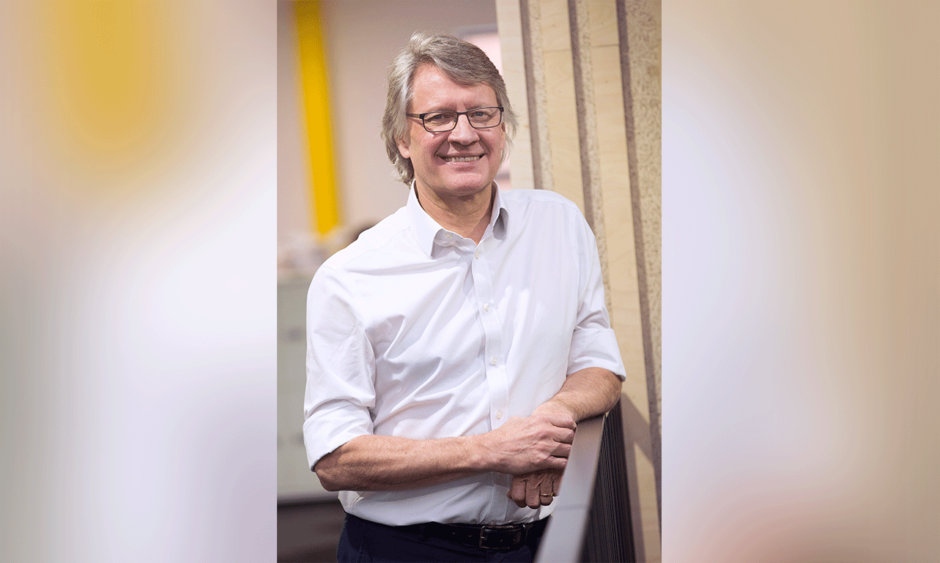Dr Mark Slack |Consultant Gynaecologist and Urogynaecologist, Chief Medical Officer and Cofounder, CMR Surgical, Cambridge, UK
![]()
What were your motivations for starting CMR Surgical, and what goals do you have for the business?
Despite having been around for 30 years, keyhole surgery has failed to penetrate the majority of surgeries. In this time multiple advantages have been demonstrated over conventional open surgery like less wound infections, reduction in pain, and fewer incisional hernias. In total, minimal access surgery (MAS) has a 50% lower complication rate; despite these many advantages, the uptake remains relatively poor because of the difficulties in mastering keyhole surgery.
I believe that robotic surgery can provide the bridge for surgeons to transition from open surgery to MAS more easily than with conventional manual (handheld) MAS.
What are the biggest obstacles that are impeding patient access to MAS, and how can they be overcome?
MAS is technically very difficult. Many surgeons struggle to adapt to the techniques for MAS. Even with training, many surgeons struggle to attain the competencies required to perform MAS fluently and well; consequently, they revert to open techniques. Complex manoeuvres like suturing and knot tying are difficult to master with conventional unwristed MAS instruments. The addition of robotic wristed instruments, three-dimensional magnified vision, and better control and precision offered by the robot will help surgeons master these otherwise difficult techniques. This will allow more surgeons to perform keyhole surgery therefore getting it to more patients with all the benefits it gives.
How has the coronavirus disease (COVID-19) pandemic affected surgical developments?
It has released the brakes on the monopoly held by major companies. There is now an accelerated process for trial development, which has already shown results with the sped-up process for vaccine development. The pandemic has highlighted many outdated practices in surgery that are brakes to efficient delivery of service. It has shown that admission for same day surgery and the use of enhanced recovery to speed up discharge are important aspects of efficient safe and economical surgery.
With the ongoing COVID-19 pandemic having significant impacts on performing surgical procedures, what role could robotic surgery have in ensuring that patients are still able to undergo surgery?
Robotically assisted surgery can help to reduce the number of people in direct contact with the patient for prolonged periods of time. It reduces the number of surgeons and assistants at the bedside as well as the number of people in the theatre. Indeed, the surgeon can be behind a protective screen or even in an adjacent room for most of the surgery. As the pandemic has progressed, we have realised that the risk to operating theatre staff is small, so this has not really made a huge difference; however with less pain and lower complications there will be a reduction in the time spent in hospital for patients, reduced readmissions, and reduced reoperations.
What do you think have been some of the major medical breakthroughs of the past year? Have any particularly resonated with you?
2020 has been a miraculous year in medicine. In under 12 months, scientists have characterised the genetic profile of COVID-19, understood the disease process leading to the introduction of different management techniques leading to marked reduction in complications and mortality, developed a number of vaccines (both traditional and novel), and started administering them to patients. The mRNA vaccines have a very high effectiveness and also work in the elderly. In addition, it looks like these techniques may also have a role in tumour immunology.
The 2020 Nobel prize was awarded to the developers of the CRISPR technique: a development likely to have a similar impact on healthcare as the discovery of antibiotics. Finally, Demis Hassabis (London, UK) and his team have developed an algorithm to decipher the 3D structure of proteins, which could change the rate and number of new developments of drug discovery and disease management.
You recently gave a presentation at the Association of Surgeons in Training (ASiT) Surgical Summit, what were the main messages from this talk?
I wanted to inform them about my vision of the future of surgery. I also wanted to show them the proven scientific evidence of why we believe robotics is the way forward. More importantly, I wanted to motivate them about their chosen career path. To remind them that they are in a wonderful profession and to remind them of their responsibilities to the pursuit of good science and to always remember that the ethical approach to medicine is the only one.
What do you envision the future of surgery to be, and what ongoing innovations are you most excited to see in surgical practice?
Surgery is about to go through a renaissance. As more data on surgical outcomes become available, the surgical community will take steps to improve performance. The use of data bases to monitor outcomes will become widespread. A robot introduces a system between the surgeon and the patient that makes the capture of data much easier. This also allows the correlation of outcome data with the systems telemetry and the possibility of monitoring performance through objective metrics. The gradual introduction of artificial intelligence with advanced hyperspectral imaging, image overlay, and autonomous functions will all contribute to better and better surgical outcomes. So much to look forward to and so much to do.








